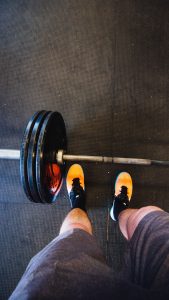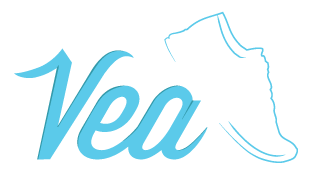Dr. Gross on Fitness this Summer: “Thighs Out, Skies Out!”
The below is a guest blog post by Zack Gross, M.D. at Florida State University
Almost every time I walk into the gym the squat racks are taken. As I wait patiently for one to open up, I can’t help but realize that everyone is doing squats. Well, back squats. The front squat is a variation that has become as rare as finding someone who doesn’t take a joke personally now a days. Not only does this lift give your traps a breather from all those back squats you have been doing but people will be calling you quadzilla in no time since this will blast your quads more than the back squat. After all it is summer…THIGHS OUT SKIES OUT!
 By this point you may be questioning why you would ever leave you comfort zone of the back squat and start front squatting. Let’s discuss the benefits of the front squat. Back pain is such a common complaint these days. After all, we sit all day in a position that we were never meant to be in for long periods of time, yes we were better off as hunter gatherers without office chairs. We can leave that topic for another day. The front squat places much less stress on the low back compared to the back squat and this alone will reduce your risk of low back injury. The front position of the bar really stresses the abs and obliques which will benefit you in so many ways in the gym. Especially during those dead lifts! And last but not least, QUADS QUADS QUADS. Your quad development with exponentially grow.
By this point you may be questioning why you would ever leave you comfort zone of the back squat and start front squatting. Let’s discuss the benefits of the front squat. Back pain is such a common complaint these days. After all, we sit all day in a position that we were never meant to be in for long periods of time, yes we were better off as hunter gatherers without office chairs. We can leave that topic for another day. The front squat places much less stress on the low back compared to the back squat and this alone will reduce your risk of low back injury. The front position of the bar really stresses the abs and obliques which will benefit you in so many ways in the gym. Especially during those dead lifts! And last but not least, QUADS QUADS QUADS. Your quad development with exponentially grow.
Let’s consider the difference between the mechanics of the front squat versus the back squat. When dealing with the front squat, the main variation is the position of the bar. In the front squat the bar will rest on the shoulders (sounds uncomfortable, I know, and it is). But who said the gym was supposed to be a kindergarten dance? No one. The lifter must maintain a perfectly upright torso during the lift as opposed to the back squat. Why? In the front squat if you lose that up right torso the bar will roll right off of your shoulders which prevents any cheating what so ever during the lift. At this point you are probably thinking ok let’s get to what we actually care about, “what about my gains?” When the bar shifts to the front of the body in exercises such as the front squat, the load transfers to the quads, abs, and knees compared to the back squat where the load is placed on the glutes and hamstrings.
When performing the front squat just like any other exercise, WARM UP AND FORM IS CRUCIAL. Take it from a former college hockey player that has had five knee surgeries. If I don’t warm up correctly and my form is off on these lifts my day is over at the gym thanks to knee pain. It is so important to have adequate mobility when performing squats so here is my typical squat warm up:
Kneeling Hip Flexor stretch: 1 minute each leg
Sumo squat stretch: 1 minute
Good mornings (bar only): 12 reps
Reverse lunge with overhead reach: 8 reps each leg
Hip hinge: 10 reps
Once you are warmed up: it’s time to get into the hole!
![]() What you must understand is that your ego must be left at the door when you are performing this squat variation. If you are just starting these for the first time, use the bar only. This is because the front of the body cannot hold anywhere close to the amount of weight that the back can in the back squat. So put your Snapchat/Instagram/Facebook away and stick to selfies for the day because no one wants to see someone lifting muffin weights. I like to have the bar racked about an inch or two below my shoulders. To begin the front squat, place your hands in a similar width as you would on a bench press. Keeping the arms straight, grip the bar, now roll your wrist and arms under the bar until they are parallel with the floor, now use a clean grip (your index and middle fingers just to the outside of each shoulder) to support the bar in the shoulder girdle. Yes the bar will be pushing up against your trachea and you will hate me for this but working out involves effort if you forgot, which to be honest is extinct now a days at these so called gyms that have turned into night clubs. Unrack the bar, take a few steps back and widen your stance about shoulder width and have the toes pointing out about 10-15 degrees. Now you’re ready to get into the hole. Keeping the elbows high, parallel to the floor, and an up right torso, begin to squat, keep the knees pushed out and simultaneously breathe in (this engages your core which is crucial in the front squat) until thighs are parallel to the ground. At the bottom of the squat hold your breath and drive through the heels to a standing position while slowly exhaling. I CANNOT EMPHASIZE ENOUGH, THE IMPORTANCE OF AN ENGAGED CORE DURING THE FRONT SQUAT.
What you must understand is that your ego must be left at the door when you are performing this squat variation. If you are just starting these for the first time, use the bar only. This is because the front of the body cannot hold anywhere close to the amount of weight that the back can in the back squat. So put your Snapchat/Instagram/Facebook away and stick to selfies for the day because no one wants to see someone lifting muffin weights. I like to have the bar racked about an inch or two below my shoulders. To begin the front squat, place your hands in a similar width as you would on a bench press. Keeping the arms straight, grip the bar, now roll your wrist and arms under the bar until they are parallel with the floor, now use a clean grip (your index and middle fingers just to the outside of each shoulder) to support the bar in the shoulder girdle. Yes the bar will be pushing up against your trachea and you will hate me for this but working out involves effort if you forgot, which to be honest is extinct now a days at these so called gyms that have turned into night clubs. Unrack the bar, take a few steps back and widen your stance about shoulder width and have the toes pointing out about 10-15 degrees. Now you’re ready to get into the hole. Keeping the elbows high, parallel to the floor, and an up right torso, begin to squat, keep the knees pushed out and simultaneously breathe in (this engages your core which is crucial in the front squat) until thighs are parallel to the ground. At the bottom of the squat hold your breath and drive through the heels to a standing position while slowly exhaling. I CANNOT EMPHASIZE ENOUGH, THE IMPORTANCE OF AN ENGAGED CORE DURING THE FRONT SQUAT.
As you do more and more front squats your mobility in the upper and lower body will improve as well as your functional strength. The key to becoming a great front squatter is to do them as much as you can with correct form.
Zachary Gross is an accomplished medical doctor, published author and internal medicine resident physician at Florida State University College of Medicine. He cut his teeth as an ice hockey player in Washington D.C. and went on to play Junior A hockey in Syracuse, New York and Boston, Massachusetts. Following, he attended The University of Arizona and Curry College, where he graduated magna cum laude in public health with a minor in biology. Zachary then pursued clinical research on thyroid cancer at Washington Hospital Center. Feeling compelled to get involved in medical research, he spent a year at the Institute for Myeloma and Bone Cancer Research in West Hollywood, California as clinical research analyst and published various research papers on Multiple Myeloma, two of which Zack was a first author on. He attained his M.D. from Ross University School of Medicine.



